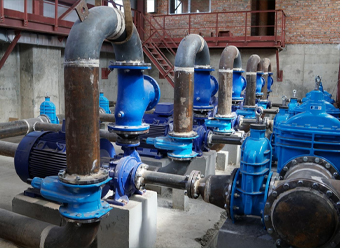English
- Afrikaans
- Albanian
- Amharic
- Arabic
- Armenian
- Azerbaijani
- Basque
- Belarusian
- Bengali
- Bosnian
- Bulgarian
- Catalan
- Cebuano
- Corsican
- Croatian
- Czech
- Danish
- Dutch
- English
- Esperanto
- Estonian
- Finnish
- French
- Frisian
- Galician
- Georgian
- German
- Greek
- Gujarati
- Haitian Creole
- hausa
- hawaiian
- Hebrew
- Hindi
- Miao
- Hungarian
- Icelandic
- igbo
- Indonesian
- irish
- Italian
- Japanese
- Javanese
- Kannada
- kazakh
- Khmer
- Rwandese
- Korean
- Kurdish
- Kyrgyz
- Lao
- Latin
- Latvian
- Lithuanian
- Luxembourgish
- Macedonian
- Malgashi
- Malay
- Malayalam
- Maltese
- Maori
- Marathi
- Mongolian
- Myanmar
- Nepali
- Norwegian
- Norwegian
- Occitan
- Pashto
- Persian
- Polish
- Portuguese
- Punjabi
- Romanian
- Russian
- Samoan
- Scottish Gaelic
- Serbian
- Sesotho
- Shona
- Sindhi
- Sinhala
- Slovak
- Slovenian
- Somali
- Spanish
- Sundanese
- Swahili
- Swedish
- Tagalog
- Tajik
- Tamil
- Tatar
- Telugu
- Thai
- Turkish
- Turkmen
- Ukrainian
- Urdu
- Uighur
- Uzbek
- Vietnamese
- Welsh
- Bantu
- Yiddish
- Yoruba
- Zulu
Telephone: +86 13120555503
Email: frank@cypump.com
Sep . 11, 2024 10:24 Back to list
Mixed Flow Pump
Understanding Mixed Flow Pumps
A mixed flow pump is an essential type of hydraulic machinery used in various industrial applications to transport fluids. Unlike specific types of pumps that primarily operate under a single flow principle, mixed flow pumps combine the characteristics of both centrifugal and axial flow pumps, making them versatile for handling a broad range of fluids, including water, chemicals, and slurries.
Working Principle
The operational mechanism of a mixed flow pump is quite fascinating. It employs an impeller, which is a rotating component designed to impart energy to the fluid. As the impeller spins, it pushes the fluid outward from the center toward the outer edge, similar to a centrifugal pump. However, unlike centrifugal pumps that produce a purely radial flow, mixed flow pumps induce a simultaneous axial flow. This dual action helps the pump move fluids efficiently through the system, striking a balance between high flow rates and moderate pressures.
The design of the impeller is critical to the pump's function. Typically, the blades of a mixed flow pump are angled to facilitate both the radial and axial movements of the fluid. This geometry enables the pump to handle large volumes of fluid while maintaining adequate pressure, which is particularly useful in systems where a substantial flow rate is needed without excessive pressure drops.
Applications
Mixed flow pumps are widely used in various sectors due to their adaptability. They can be found in municipal water supply systems, irrigation projects, and drainage systems. Additionally, these pumps are essential in industries like mining, manufacturing, and wastewater management, where the movement of large quantities of fluids is crucial.
what is mixed flow pump

In water treatment facilities, mixed flow pumps are used to transport water through various treatment processes. Their ability to manage solid particles makes them suitable for handling wastewater, sludges, and even corrosive substances in different industrial processes. The flexibility of mixed flow pumps also makes them appropriate for cooling systems in power plants, where they facilitate the circulation of water to maintain optimal operating temperatures.
Advantages and Limitations
One of the key advantages of mixed flow pumps is their ability to operate efficiently over a range of conditions. They can manage varying fluid viscosities and entrained solids, making them highly versatile. Additionally, their design allows for a compact footprint, which is beneficial in installations where space is a constraint.
However, mixed flow pumps also have limitations. They are not as efficient as centrifugal pumps at very high heads, and their performance can degrade with significant changes in operating conditions. Proper selection and application are critical to ensure that they meet the necessary flow and pressure requirements.
Conclusion
In summary, mixed flow pumps play a vital role in fluid transport across various industries. Their unique design allows them to combine the benefits of centrifugal and axial flow principles, making them suitable for applications requiring both high flow rates and moderate pressures. As industries continue to evolve and demand more efficient fluid handling solutions, understanding the operation and applications of mixed flow pumps will remain essential for engineers and system designers alike.
-
ISG Series Vertical Pipeline Pump - Chi Yuan Pumps Co., LTD.|Advanced Hydraulic Design&Energy-Efficient Solutions
NewsJul.30,2025
-
ISG Series Vertical Pipeline Pump - Chi Yuan Pumps Co., LTD.
NewsJul.30,2025
-
ISG Series Vertical Pipeline Pump - Chi Yuan Pumps Co., LTD.|energy-efficient fluid handling&industrial durability
NewsJul.30,2025
-
ISG Series Vertical Pipeline Pump - Chi Yuan Pumps | Advanced Engineering&Industrial Efficiency
NewsJul.30,2025
-
ISG Series Pipeline Pump - Chi Yuan Pumps | High Efficiency, Energy Saving
NewsJul.30,2025
-
ISG Series Vertical Pipeline Pump-Chi Yuan Pumps|High Efficiency&Reliable Performance
NewsJul.29,2025










